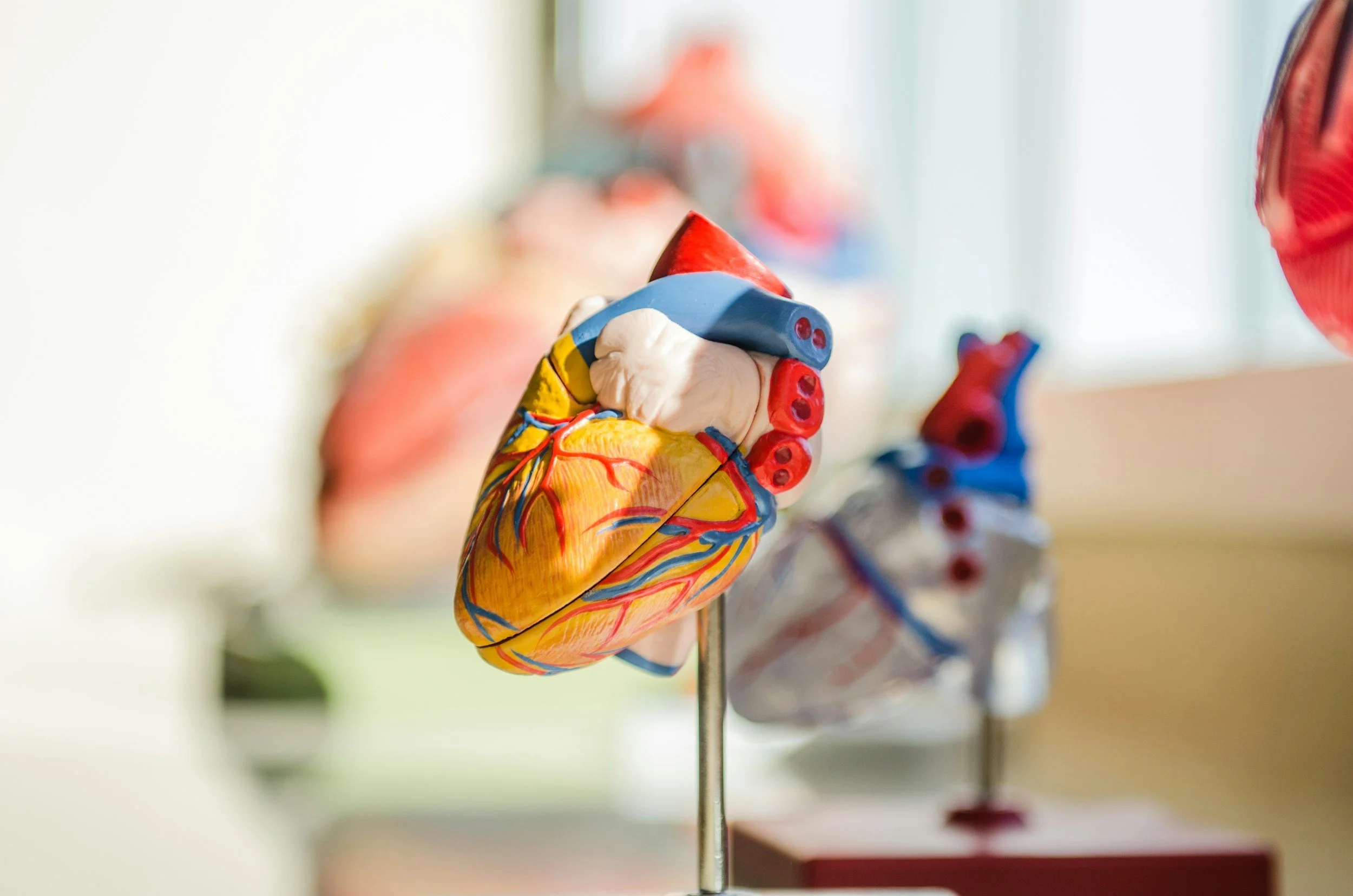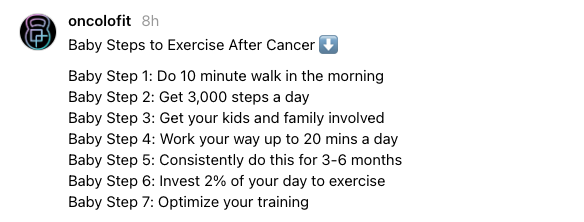How Chemotherapy Affects the Heart: What Every Cancer Survivor Should Know
Heart disease is the most common cause of death among cancer survivors who don’t die from cancer itself.
Yet most survivors are never told that certain chemotherapy drugs affect the heart.
This potential heart damage is known as cardiac toxicity.
Cardiac toxicity can occur in treatment or years later.
The good news…
It’s manageable and often preventable.
Below is your complete guide to lowering risk, recognizing symptoms, and protecting your long-term heart health after cancer.
What is cardiac toxicity? and how common is it?
This damage can affect:
The heart muscle
The valves
The blood vessels
The heart’s electrical system (rhythm)
These changes can lead to issues ranging from tachycardia to heart failure.
How Common Is It?
Up to 20% of cancer patients may develop heart-related complications
7–10% may develop cardiomyopathy or heart failure, depending on the treatment
Treatments with the Highest Risk include:
Anthracyclines (e.g., doxorubicin)
Radiation targeting or near the chest
Some targeted therapies (e.g., trastuzumab)
Generally,
Women are more likely to develop cardiotoxicity than men.
Survivors treated with anthracyclines in childhood have the highest lifetime risk.
And breast cancer survivors taking anastrozole show higher rates of cardiovascular events than those treated with tamoxifen.
Nutrition: One of the Best Ways to Protect Your Heart
(If chemotherapy is making it hard to eat, click here for an easy guide on what foods to choose.) click here to learn what foods to eat.
Improving your nutrition is a powerful way to reduce heart disease risk during and after cancer treatment.
Heart Healthy Eating :
Heart-Healthy Eating Guidelines
1. Eat Mostly Plants Aim for 5+ servings of fruits and vegetables daily. Choose a variety of colors—red, dark green, orange, yellow.
2. Focus on Whole Grains. High in fiber, they help lower cholesterol, blood pressure, and blood sugar.
3. Choose Lean Proteins. Red meat is safe up to 12-18 oz per week.
93% lean beef when choosing red meat.
Avoid processed meats
Choose chicken, fish, shrimp, beans, tofu, and lentils over red meat
4. Prioritize Healthy Fats. Nuts, seeds, avocado, olive oil.
5. Limit Salt and Sugar
Keep sodium < 2,500 mg/day
Avoid packaged and processed foods
Limit sugary drinks and pastries
Additional Nutrition Tips
Cook at home often
Read food labels
Limit alcohol
Drink more water
How Does Chemotherapy Affect the Heart?
Chemotherapy used for breast cancer, lymphoma, and leukemia can impact the heart in a few major ways:
1. Damaging the Heart Muscle
Anthracyclines and targeted therapies can weaken heart cells.
2. Causing Inflammation
This can disrupt the heart’s ability to pump effectively.
3. Damaging Blood Vessels
This may lead to high blood pressure or arterial blockages.
4. Creating Electrolyte Imbalances
Low potassium or calcium can trigger irregular heartbeats.
If you are receiving a treatment known to increase this risk, don’t panic. Your oncology team monitors this carefully, and cardiology check-ins are common.
Exercise: The Best Prevention Against Heart Disease After Cancer
Exercise is one of the most powerful tools to protect your heart after treatment.
Daily Activity: Walking 6,000+ steps/day lowers cardiovascular risk by 40–50%
Cardio: Moderate-intensity cardio (like brisk walking) lowers the risk of dying from cardiovascular disease by 22–25%.
Pick something accessible—walking is perfect
Aim for >6,000 steps every day
Strength Training: Weight lifting reduces heart disease risk by 17%.
6–8 exercises per session
2–4 sets of 8–10 reps
1–2 minutes rest between sets
Combining Cardio + Strength: Doing both reduces the risk of heart attack and stroke by 40–70%.
Most of my online coaching clients do well with:
30 minutes of brisk walking 3×/week
2 days of active family time (hiking, biking, playing, etc.)
For step-by-step exercise guidance after cancer, follow my YouTube channel, where I break down every movement to help you exercise safely and effectively.
To learn the best way to exercise safely after cancer this video
How Much Exercise Do You Need?
150 minutes of moderate-intensity cardio or
75 minutes of high-intensity cardio each week PLUS
2 days of full-body strength training
How to calculate moderate intensity ⬇️
Disclaimer: If you have any heart issues work with your provider to know what your heart rate max should be.
For cardio choose something that is easy and accessible to you.
And for weight lifting start with calisthenics.
If cancer fatigue is holding you back, read this blog.
Risk Factors for Cardiac Toxicity
Not everyone develops heart issues from treatment. You may be at higher risk if you:
Received anthracyclines
Received a high total dose of chemotherapy
Have a history of heart disease or high blood pressure
Are older
Had chest radiation
Are undergoing combination treatments
Symptoms to Watch For
Contact your doctor right away if you notice:
Shortness of breath
Chest pain
Swelling in the legs or feet
Irregular heartbeats or palpitations
Early detection allows treatment before damage progresses. Noticing any of these symptoms does not mean you won’t be able to exercise again.
This can be managed with medication and a proper lifestyle.
How to Start Preventing Heart Problems Today
Follow the baby steps
Steps 1-3 is about finding ways to incorporate movement and activity into your day to day without adding in exercise.
This could be adding a hobby like gardening, playing with your kids, or walking your dog.
Steps 4-6 is about adding in a specific exercise routine to your week. The goal is to move daily but exercise weekly.
Step 7 is all about optimizing and working with a trainer.
Many people miss out on the benefits of exercise because they have a poor routine that doesn’t help them get to where they want to get.
You are already spending energy moving, don’t waste it on a suboptimal routine.
Put the time to making it the most efficient and optimal as possible. But only do this once you have the consistency down.
If You Struggle With Motivation
Treat workouts like appointments you can’t miss
Exercise when you have the most energy
Focus on small “baby steps” instead of perfection
Try these simple strategies and watch the video below:
I promise you it gets better.
Meet Terry
Terry, a 67-year-old breast cancer survivor, came to me worried about exercising safely after chemotherapy left her with tachycardia.
She didn’t know where to start, so I encouraged her to get two things from her doctor.
Get medical clearance to exercise.
Ask for her max heart rate.
From there, I was able to create a workout plan for her, and she was able to exercise safely without any issues.
Now—three years into online coaching—she exercises confidently, maintains heart health without fear, and has taken full control of her recovery.
This too can be your story.
Preventing heart disease is one of the most valuable steps you can take as a survivor.
If your goals include:
Preventing heart disease
Strengthening your heart
Regaining control of your body
Exercising safely with expert guidance
But you don’t know where to begin or how to get started
Click below to schedule a consult and see if 1-on-1 coaching is right for you.
Hey!
Welcome, I'm your trainer JC 🤓
Thanks for stopping by the blog!
You'll find lots of resources on health, fat loss, nutrition, exercise, and cancer prevention.
P.s. don’t forget to grab your free gift below.
Enjoy












